Lately, I have been asked several times for the solution to a problem that is circulating on the Internet. As I found it interesting, I’m going to try to explain it as simply as I can. I even made some little drawings (you can click on any of the following images to enlarge them).
The statement is as follows:
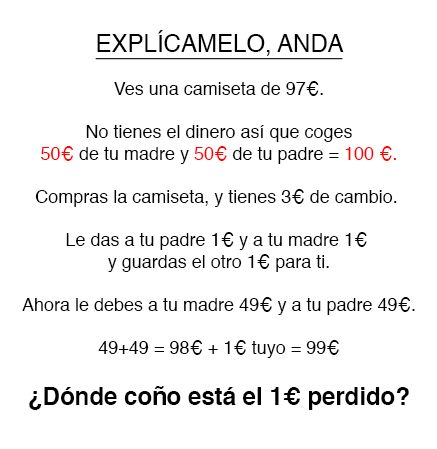
The first and most important thing is to clarify that euros do not evaporate. It may seem simple, and yes, it is, but convince yourselves of it. Stop looking for the euro, it hasn’t gone anywhere. So, logically, something is wrong with the statement. The operations, additions and subtractions, are done correctly. The “trick” is that the final calculation of the problem is not correct. It’s something subtle, it goes unnoticed, and that’s when the mess starts. So, let’s quickly review the process.
At all times, there are 100 euros in total. At the beginning, the father and mother have 50 euros each. The child has nothing, and the shopkeeper has a T-shirt.
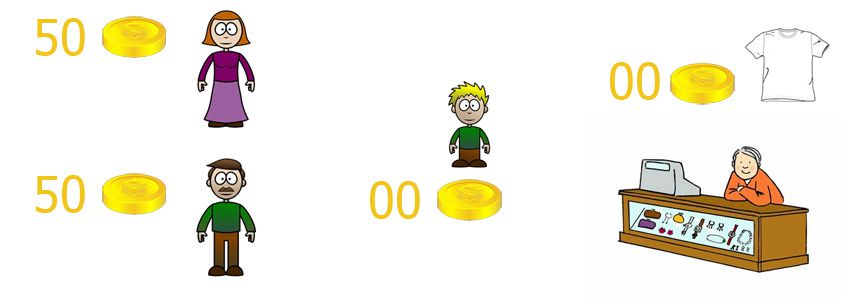
Now the parents lend him 50 euros each. The child has 100 euros, the shopkeeper has the T-shirt, and the parents have a 50-euro debt. I have drawn this as holes, which means that they both owe 50 euros (here’s the trick of the problem).
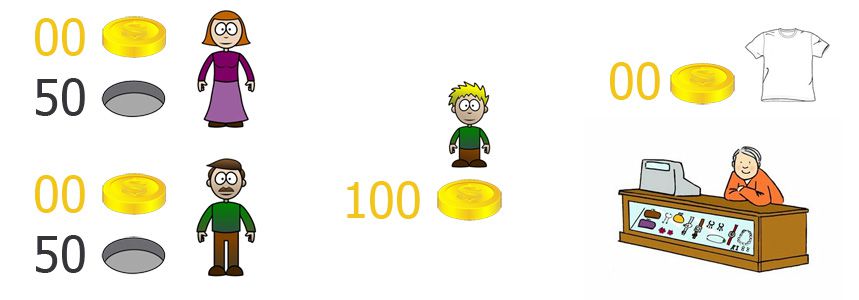
The child buys the T-shirt. Now the child has 3 euros and a T-shirt, the shopkeeper has 97 euros, and each parent has a 50-euro debt.
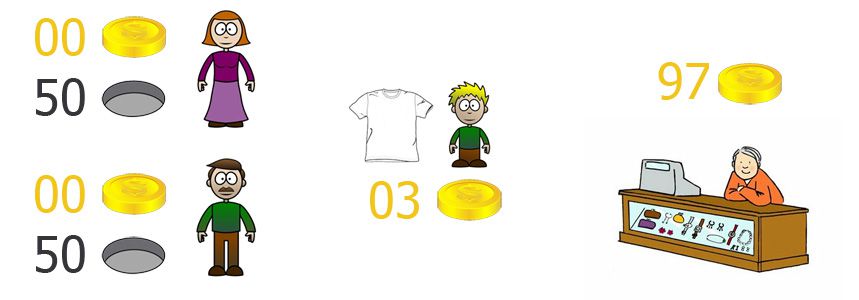
Finally, the child gives one euro to each parent. The final situation is, one euro for each parent, one euro for the child, and 97 euros for the shopkeeper. In addition, each parent has a 49-euro debt.
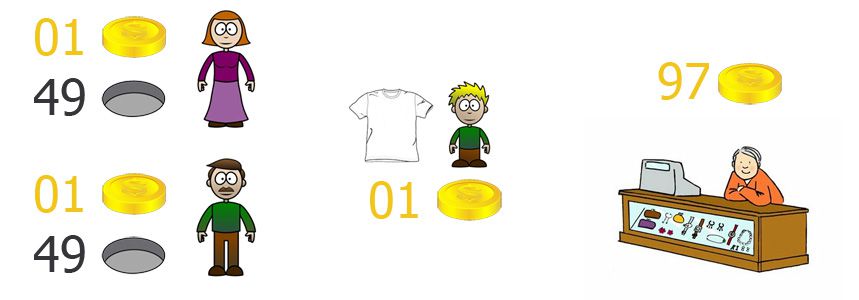
Obviously, at all times there are 100 euros. The mistake is in adding “holes” with “coins”. The 49 euros of each parent in the final situation are “debt euros,” that is, money that the child owes them, so the calculation posed by the problem is incorrect.
An economist, or an accountant, would tell you that you were adding assets and liabilities. But since I’m not an economist, I will simply tell you that you have mixed apples and oranges.
